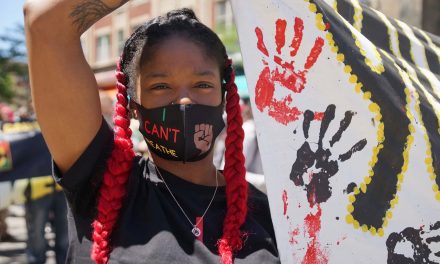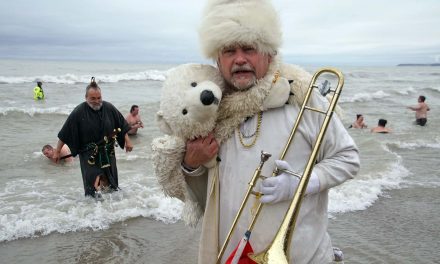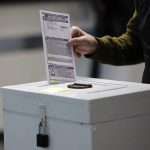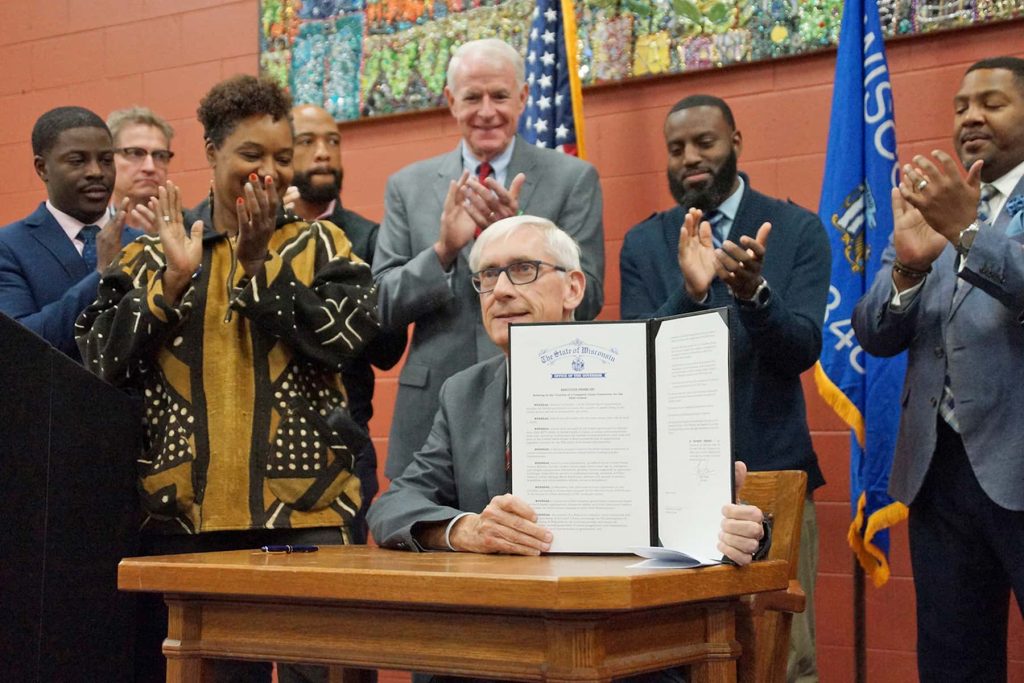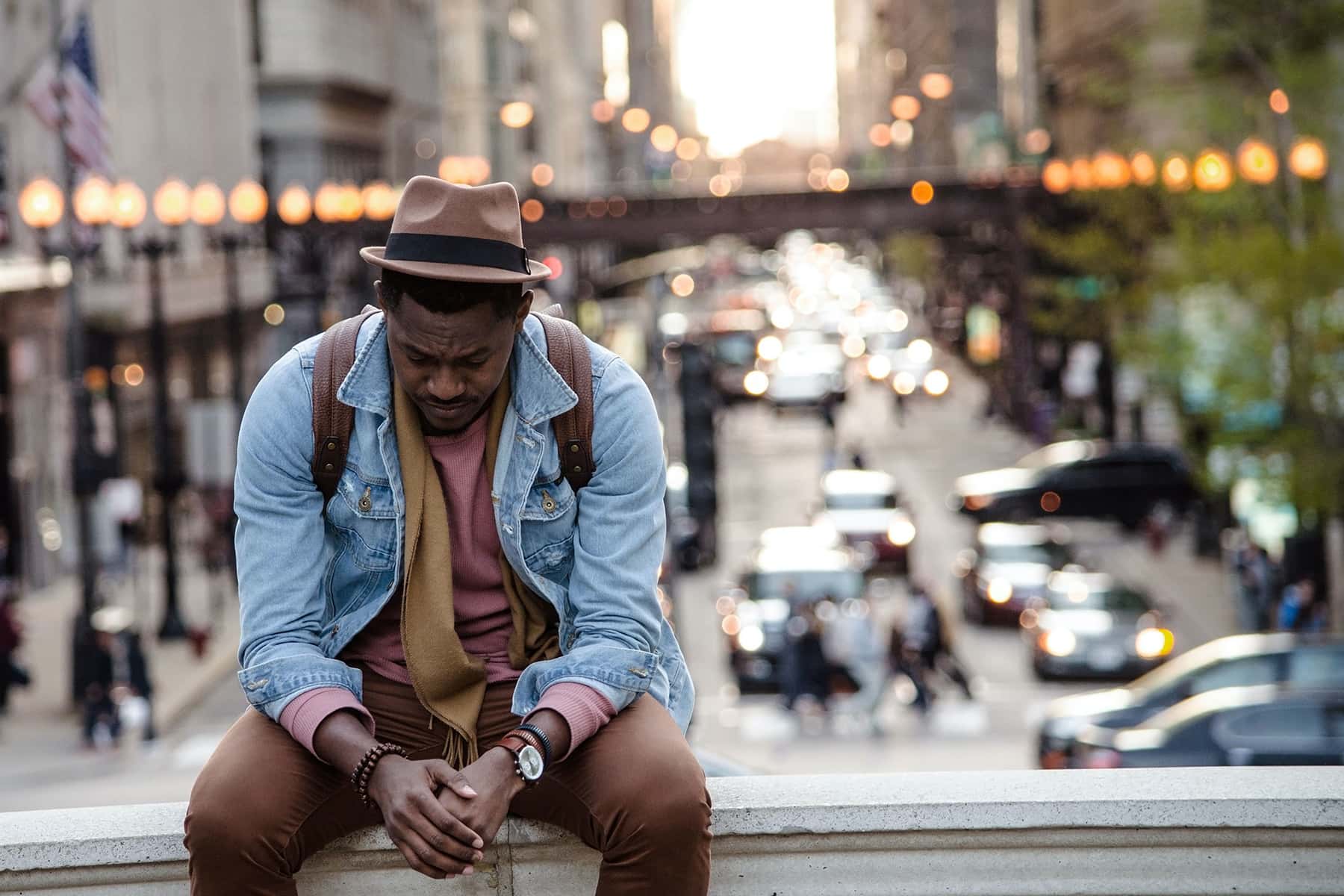
“Weathering is a physiological process that accelerates aging and increases health vulnerability. It is spurred by chronic toxic stress exposures over the life course and the tenacious high-effort coping [that] families and communities engage in to survive them, if not prevail.” – Dr. Arline Geronimus
When someone asked me if I’d been watching the trial of Derek Chauvin, who killed George Floyd last year, they were surprised by my answer. I have followed the trial in the news, but I have not watched a moment of it. I still have not watched the video of Floyd’s death last May.
As much as I write and teach about the horrors of racism, I have a very difficult time watching another of these “snuff films” masquerading as viral videos. I have no desire to see someone killed in the way Floyd, Laquan McDonald, Tamir Rice, or any of a multitude of other Black people have been murdered by police.
I understand the appeal of these videos, but it is extremely stressful to watch them over and over again. The weathering that Dr. Geronimus describes is part of the reason I have decided to limit or even eliminate the watching of these videos. It’s too much for me.
In the course of the work I do, I often use images of lynching victims to show people the reality of the lived experiences of Black people in America. These gruesome images are hard to see. I don’t use them for shock value. I just think they are a part of the American story in the same way the old 1840’s and 1850s daguerreotype photos are.
One thing that few Americans know about these lynching images, that are easily found by doing an internet search, is that they were often taken by professional photographers. The images served as a keepsake of the gruesome murders for those who both witnessed the lynchings as well as people around the country who purchased these images. They provided in the aftermath, a visceral, emotional memory for those who witnessed the lynchings. People have kept these photos in their family’s photo albums and passed them down for generations. When they pulled the pictures out, they also told the story of the photographs. It was their way of reliving the emotions of that day.
Some of these lynchings, called “spectacle lynchings,” were attended by tens of thousands of members of the local and neighboring communities. They were often advertised in local newspapers ahead to time, special trains were commissioned to bring witnesses from afar, and people made money selling food, and beverages to the crowds. At the end of these “community” events, which were celebrated like a gigantic picnic, people rushed to receive body parts, pieces of rope, pieces of victims clothing, and pieces of bark from the lynching tree. They purchased ammunition for their guns so that they could be a part of the group that emptied their guns into the victims bodies. And they later mutilated the victims bodies in an orgy of enthusiastic fervor, with Black men’s private parts being the most heavily sought after “mementos.” The revelers brought along the entire family, including children, grandchildren and great-grandchildren. The whole spectacle was celebrated and talked about for days, weeks, months, years and generations.
After the last of the Northern troops were pulled out of the South in 1876, an orgy of lynchings spread across the country. Some of the most gruesome and famous lynchings which were photographed, were actually of lynchings outside of the South. The Duluth, Minnesota lynching of Elias Clayton, Elmer Jackson, and Isaac McGhie on Tuesday, June 15, 1920, the Sunday, September 28, 1919 lynching of William Brown in Omaha, Nebraska and the Thursday, August 7, 1930 Marion, Indiana lynching of Abram Smith and Thomas Shipp are all some of the most iconic lynching images.
The photographs of the lynchings were often “framed” by the photographers to get a clear picture of the lynching victims. They took great care to include those happy, smiling, Whites who posed in the foreground. Tree limbs were sometimes cut off to get a clear view, lights were setup to ensure the “best” possible view of the victims. People were often in their “Sunday best” clothing as can clearly be seen in the aforementioned lynching photographs.
People would put the images on postcards, where they could be sold in local stores. Those who purchased these lynching postcards, would often scribble a message on the back, place a stamp on it, and stick it in the U.S. mail the same way they did travel postcards from the Statue of Liberty, Hoover Dam, Mount Rushmore and other historical places.
My mentor, Dr. James Cameron, founder of America’s Black Holocaust, survived one of these brutal, ritualistic lynchings that was saved for posterity in a photograph taken by professional photographer Lawrence Beitler on August 7, 1930. Demand for his photo was so high that he claimed he stayed up late at night for 110 weeks reproducing copies that he sold in the postcard size for fifty cents each. Historians doubt that he spent 110 weeks producing copies but the photo was the equivalent of a viral video in today’s social media.
Beitler called the image of the bodies of lynching victims Thomas Shipp, and Abram Smith, Lynching. Sixteen-year-old Cameron was supposed to be the third person hanging from that tree on the courthouse square in Marion, Indiana. He said God intervened to save his life in his memoir, A Time of Terror: A Survivors Story. Jeffrey Tse described the impact of the photograph in an article titled, The Offender Behind The Lens: Enduring Ethical Legacy of Lawrence Beitler’s Lynching Photography.
Within the photograph itself, the dead bodies of Shipp and Smith are quite visible with the nooses around their necks, suspending them from a tall tree. The young African Americans have blood on their faces and clothing, which is ripped and revealing their bare chests and torsos to the crowd. The corpses are the focus of the photograph but are not centered; instead, they share the frame with an entirely white crowd looking on with little fear, sadness, or shame in their eyes. One could even argue hints of smugness on the visible parts of the onlookers. The majority of the all-white crowd appear nicely dressed and even at total ease with the scenery, which they obviously regard as “‘so ordinary, even banal’ few could have imagined the place in history they earned that night by posing for Lawrence Beitler’s camera.” One man points up to the body on the right, almost as if drawing attention to what they had just accomplished. Particularly memorable is the young man towards the lower left corner, wearing a thin tie and smiling, as he appears to be holding hands with an attractive woman who is standing next to another. While the image is a bit less clear at this angle, the next woman appears to be holding food in her hands and eating from it.
The image was seen by a Bronx school teacher, poet and songwriter, Abel Meeropol. He was appalled by the image and wrote a poem, Bitter Fruit, thinking it was a southern lynching. He eventually turned the poem into a song, Strange Fruit, immortalized by Billie Holliday who was the first of many artists to perform the song. People who see the photograph are rarely aware of the connection to the song or to Cameron’s story and his founding of America’s Black Holocaust Museum fifty-eight years later when he was seventy-four years old.
Cameron’s story was part of the motivation for Bryan Stevenson creating the six acre National Memorial for Peace and Justice, known by many as the national lynching memorial in Montgomery, Alabama. I met Mr. Stevenson and talked to him about my work with the museum and he said he had met Mr. Cameron on several occasions and was inspired by his museum and life story. Most people are completely unaware that years before Stevenson created his memorial, America’s Black Holocaust virtual Museum had the first ever memorial to lynching victims which it created in 2012.
Many of these horrific postcard images were featured in an exhibit and book by James Allen, Without Sanctuary: Lynching Photography in America. Allen was an antique collector who came across these “special” collections as he traveled across the South to large and small antique shops. Over the course of time, he collected 145 lynching postcards. He said this about his collection:
“What is most disturbing about these scenes is the discovery that the perpetrators of the crimes were ordinary people, not so different from ourselves … they were family men and women.”
Ordinary people committing atrocious crimes. When the Black community endures police killings of members of their community, they see ordinary people who are supposed to protect them, acting like that is the last thing they want to do. When these incidents happen, the cops are automatically humanized, and the victim is automatically marginalized. We see mugshots of the victim and images of the police officer in uniform. On those exceptionally rare occasions when these end up in court, we hear about prior “bad acts” by the victim, but the prior bad acts of police officers involved are hidden from us. We don’t have access to their discipline records that would possibly show a pattern of bad acts by these officers.
The victim becomes the person blamed for their own deaths. We are seeing this with the case of the police officer who murdered George Floyd. Floyd himself is on trial as much as Chauvin is. As the remaining officers in the case are tried, we will undoubtedly see the same pattern emerge. Blame the victim, make him the bad guy.
The loss of people killed by police, resonates throughout the community. I have read in recent news reports about the trauma suffered by those who witnessed the killing of George Floyd. Children, and adults have told of how psychologically draining that encounter was. This is the trauma we don’t often hear about because only about 1 percent of cops who kill are ever charged with a crime. As a result, we only get to hear the story from one perspective. What the offending officer says becomes the permanent record of what happened.
This is reminiscent of the decades of lynchings documented in newspaper accounts across the country. In almost all of the cases White newspapers accepted the official version of events and even promoted lynchings ahead of time. Black newspapers like the Chicago Defender and organizations like the NAACP refused to believe the official version of events and often investigated these crimes independently. Walter White of the NAACP, who because of his light complexion often risked his life by investigating lynchings. In more than one case he was discovered and had to flee in the middle of the night to escape a lynching himself. The coroner’s findings that “this person died at the hands of parties unknown” was the typical response after a lynching.
We have been conditioned to believe the official version from watching decades of horribly, inaccurate cop shows that I call “copaganda.” These shows, which permeate the airwaves, tell us the cops are always the “good guys,” protecting us from the “bad guys.” There is no nuance in these shows. Watching them impacts us in such a way that we overestimate the amount of crime in our society. We are left with a sense of how difficult life is being a cop. The other side of the coin, the difficulty in dealing with cops is rarely ever explored, and when it is, is done very poorly. Americans love these shows and they last for generations in reruns found on all of the streaming platforms.
Those stories of dealing with cops, from the Black and Hispanic as well as Native American communities are left out of local news and Hollywood television and movies. It is rare to hear the life story of the victims. It is rare to hear the trauma that consumes the families, friends, neighbors and community members when someone is killed by the police. We can’t build empathy for them, because no one tells the stories in such a way that empathy will follow naturally after these events. Instead, we hear people ask ridiculous questions that assume the victim did something that led to the officer having no choice but to use deadly force. George Floyd is a rare case where there was a great deal of empathy right after his murder.
If the killing of Blacks by police was a rare occasion, then I would understand the skepticism. These killings are happening so often that we can’t even keep track of the names of the victims anymore. They have been a part of the lived experiences of people of color for so long that we see it as a normal part of what we can expect when it comes to police interactions. We know that most times those interactions will be okay, but you never know if you are that case where things don’t end well.
It is emotionally draining when we have to deal with the aftermath of anti-black violence. In 1899 Ida B. Wells-Barnett wrote Lynch law in Georgia : a six-weeks’ record in the center of southern civilization. She began with these words:
“During six weeks of the months of March and April just past, twelve colored men were lynched in Georgia, the reign of outlawry culminating in the torture and hanging of colored preacher Elijah Strickland, and the burning alive of Samuel Wilkes, alias Hose, Sunday, April 23, 1899. The real purpose of these savage demonstrations is to teach the Negro that in the South he has no rights that the law will enforce.”
When civilians and police kill Black people and get away with it, we feel the same sentiments she expressed well over a century ago. The damage does not go away after the trial or non-trial. It lingers for weeks, months, years decades and centuries in our collective memories and leads to generational trauma.
As we experience another case of this by watching the events unfold in Minneapolis, the pain appears to come to the surface again. What people outside of communities impacted this don’t get, is that the pain is ever-present, in the form of fear of police officers.
We will be impacted in a multitude of ways after this first trial in Minneapolis ends. How it ends, with guilty or not guilty verdicts, and the specifics of that will determine the immediate aftermath. I can already guarantee that the police and National Guard will be on standby awaiting the outcome. We will see armored vehicles, riot gear, and hear the typical calls for calm prior to the verdict being announced.
The long-term impacts will not be readily apparent after the dust settles. The media throngs will eventually move on to other things as they always do. The community will suffer the trauma long-term regardless of the outcome. The emotional pain will not subside overnight like it does in Hollywood movies. It will sit like a dark cloud in the psyches of people who will ask why justice is so fleeting for Black people. Regardless of the outcome in Minneapolis, it will not take away the pain of other cases where charges were not filed. It will not allow us to forget the times juries and judges ruled that officers acted in a “constitutionally objective fashion” in killing two unarmed Blacks, Melissa Williams and Timothy Williams, in a hail of 137 shots by Cleveland police in 2012.
As I said in the beginning, I can’t watch the trial, because it pains me to see the traumatized witnesses testify. I don’t want to see the videos of George Floyd’s death because it only provides pain to my psyche.
Studying American history in the way that I do, makes seeing these images and videos difficult psychologically. I pour out my emotions in the words I write, because it is cathartic. I hope my words provide the same for those whose families and ancestors have dealt with this horror for four-hundred years. Acknowledgement of the truth is important. For far too long America, specifically White America, has hidden from that ugly truth.
“All that can save you now is your confrontation with your own history … which is not your past, but your present,. Your history has led you to this moment, and you can only begin to change yourself by looking at what you are doing in the name of your history.” – James Baldwin

